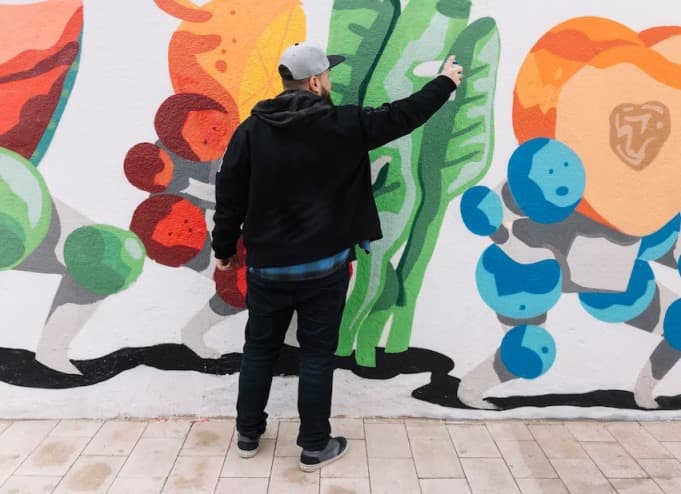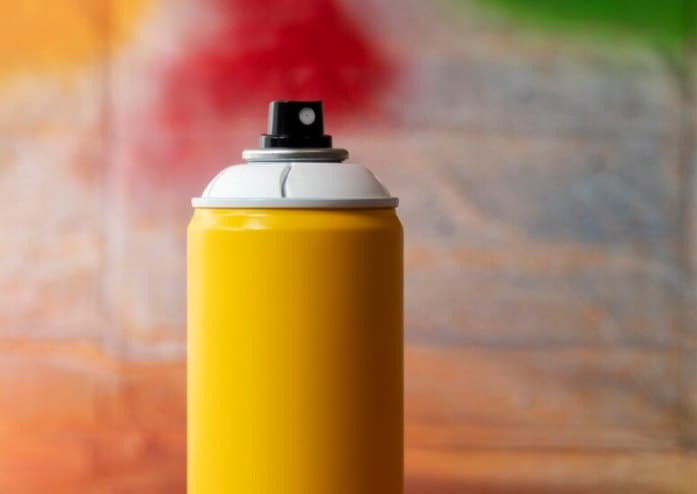Graffiti is defined as unauthorized markings or drawings on someone else’s property. This can range from simple scribbles to elaborate murals and street art.
Graffiti is a controversial issue and one that continues to spark debate. While some people see it as a form of self-expression, others view it as vandalism that is harmful to communities and property owners.
In this article, we provide a comprehensive overview of the laws surrounding graffiti in the United States and the consequences of getting caught doing it. It will also explore alternative ways to express oneself creatively.

Image Source: Freepik
Understanding Graffiti Laws
In legal terms, graffiti is considered vandalism, which is a criminal offense. This means that it is illegal to mark someone else’s property without their permission.
Graffiti laws vary from state to state in the United States. Some states have more severe consequences for those caught doing graffiti, while others have less strict laws.
Punishments for graffiti can range from fines and community service to probation and even jail time. The extent of the punishment often depends on the severity of the crime and the state’s laws.
Read: What’s The Difference Between A Felony And A Misdemeanor?
Consequences of Getting Caught Doing Graffiti
If caught doing graffiti, a person can face criminal charges, which can range from a misdemeanor to a felony depending on the extent of the damage.
In addition to criminal charges, those caught doing graffiti may also be fined and required to pay restitution for the repair or restoration of the damaged property.
Community service is often a common punishment for those caught doing graffiti and is intended to give back to the community that was affected by the vandalism.
In more severe cases, a person may be sentenced to probation or jail time for their graffiti offenses. The length of jail time for graffiti in the US varies by state and the severity of the crime.
The maximum sentence for graffiti in the US can range from several months to several years, depending on the circumstances.
For example, in California, graffiti is considered a misdemeanor and can result in up to one year in county jail and a fine of up to $50,000. In New York, graffiti is considered a criminal mischief offense and can result in up to seven years in prison and a fine of up to $15,000.
It’s important to note that the actual sentence for graffiti in the US can vary greatly based on the individual case and the discretion of the judge. Factors such as the value of the damage caused, the presence of prior offenses, and the offender’s criminal history can all impact the sentence.

Image credit: Freepik
Prevention and Alternatives
To prevent graffiti, many communities have established legal graffiti walls and murals as a safe and acceptable outlet for artists to express themselves.
Art programs for youth are another alternative to illegal graffiti, providing young people with a positive outlet for their creativity and a way to contribute to their communities.
Community clean-up programs are another way to prevent graffiti and promote respect for property. These programs typically involve volunteers who help remove graffiti from public spaces and keep communities looking clean and well-maintained.
Read: Innocent Until Proven Guilty: How To Beat A Criminal Charge
How to not get caught doing graffiti
Getting caught doing graffiti can have serious consequences, so it is important to avoid engaging in illegal activity. To not get caught, you can consider the following steps:
- Only graffiti on legal walls or surfaces: Many cities have designated legal graffiti walls or murals where artists can legally express themselves through graffiti.
- Be aware of your surroundings: Graffiti in highly visible areas or in areas with a lot of foot traffic is more likely to be noticed and reported. Try to choose less populated areas where you are less likely to be seen.
- Work at night: Graffiti is more likely to go unnoticed at night when fewer people are around. However, it’s important to be cautious and aware of your surroundings even at night.
- Use quick-drying materials: Using quick-drying materials can minimize the amount of time you spend at a site and reduce the risk of being caught.
- Wear appropriate clothing: Wearing dark, inconspicuous clothing can help you blend in and avoid being noticed.
- Clean up after yourself: Always clean up after yourself and remove any evidence of your activity, such as spray paint cans or markers.
- Consider alternative forms of artistic expression: There are many legal ways to express yourself creatively, such as through street art, murals, or legal graffiti walls.
Remember that graffiti is illegal and can result in severe penalties, so it’s important to consider the potential consequences before engaging in any illegal activity.
Read Also: Is It Legal For Courts To Use Private Facebook Correspondence For Evidence?
Conclusion
Graffiti is a criminal offense in the United States, and those caught doing it can face consequences such as criminal charges, fines, community service, probation, and jail time. The importance of respect for property cannot be overstated, and it’s essential that individuals understand the consequences of their actions when it comes to graffiti.
While graffiti can be an effective form of self-expression, there are many alternative ways to do so that are both legal and positive for communities. It’s important to encourage individuals to choose these alternatives over illegal graffiti.